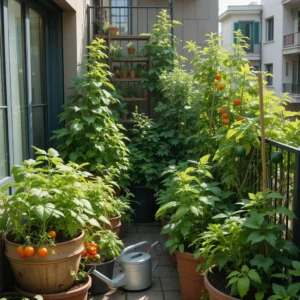
Flowering plants, also known as angiosperms, are the most diverse group of land plants, boasting over 300,000 species worldwide. These plants play a crucial role in the ecosystem by providing oxygen, food, and habitat for various organisms. Whether you are a gardening enthusiast, botanist, or simply someone who appreciates nature’s beauty, understanding flowering plants can deepen your appreciation for their significance.
In this comprehensive guide, we will explore different types of flowering plants, their benefits, how to grow and care for them, and much more. If you’re searching for everything you need to know about flowering plants, you’ve come to the right place!
What Are Flowering Plants?
Flowering plants are a type of vascular plant that produces flowers and seeds enclosed within a fruit. These plants belong to the division Magnoliophyta and are classified into two main groups:
- Monocots (Monocotyledons) – Plants with a single seed leaf (cotyledon), parallel leaf veins, and flower parts in multiples of three (e.g., lilies, orchids, grasses).
- Dicots (Dicotyledons) – Plants with two seed leaves, branched veins, and flower parts in multiples of four or five (e.g., roses, sunflowers, oak trees).
Types of Flowering Plants
Flowering plants come in various types, each offering unique beauty and characteristics. Here are some popular categories:
1. Annuals
- Complete their life cycle in one growing season.
- Examples: Marigolds, Petunias, Sunflowers.
2. Perennials
- Live for multiple years, blooming seasonally.
- Examples: Roses, Tulips, Peonies.
3. Biennials
- Take two years to complete their life cycle.
- Examples: Foxglove, Hollyhock, Sweet William.
4. Tropical Flowering Plants
- Thrive in warm and humid climates.
- Examples: Hibiscus, Orchids, Bird of Paradise.
5. Indoor Flowering Plants
- Perfect for home and office spaces.
- Examples: Peace Lily, African Violet, Anthurium.
6. Wildflowers
- Grow naturally without human intervention.
- Examples: Bluebells, Daisies, Poppies.
Benefits of Flowering Plants

Flowering plants are not just beautiful—they offer numerous benefits:
1. Oxygen Production & Air Purification
- Plants release oxygen and filter pollutants from the air, improving indoor and outdoor air quality.
2. Pollinator Attraction
- Many flowering plants attract bees, butterflies, and birds, helping with pollination and biodiversity.
3. Aesthetic and Psychological Benefits
- Flowers boost mood, reduce stress, and enhance the beauty of gardens and interiors.
4. Food & Medicine
- Many flowers (e.g., chamomile, hibiscus) are used in herbal teas and traditional medicine.
5. Environmental Conservation
- Flowering plants prevent soil erosion and support wildlife.
How to Grow and Care for Flowering Plants

Growing flowering plants successfully requires the right conditions and care. Here are essential tips:
1. Choosing the Right Soil
- Use well-draining soil with rich organic matter for optimal plant health.
2. Providing Adequate Sunlight
- Most flowering plants need 6-8 hours of sunlight daily.
3. Watering Properly
- Water according to plant type—overwatering can lead to root rot.
4. Fertilization
- Use balanced fertilizers (NPK: Nitrogen, Phosphorus, Potassium) to enhance flowering.
5. Pruning & Deadheading
- Regularly trim dead flowers and leaves to encourage new blooms.
6. Pest & Disease Control
- Use natural pesticides like neem oil or introduce beneficial insects (e.g., ladybugs) to control pests.
Popular Flowering Plants for Your Garden

If you’re planning to start a flower garden, consider these top choices:
1. Roses (Rosa spp.)
- Classic and timeless; available in various colors.
2. Lavender (Lavandula spp.)
- Fragrant and known for its calming properties.
3. Sunflowers (Helianthus annuus)
- Bright, cheerful, and easy to grow.
4. Tulips (Tulipa spp.)
- Vibrant spring bloomers with various shades.
5. Hibiscus (Hibiscus rosa-sinensis)
- Stunning tropical flowers with medicinal benefits.
Best Flowering Plants for Indoor Spaces
For those who prefer indoor gardening, these plants are ideal:
- Orchids – Elegant and long-lasting.
- Peace Lily – Purifies air and thrives in low light.
- Jasmine – Emits a soothing fragrance.
- African Violets – Compact and colorful.
- Anthurium – Produces vibrant red or pink flowers.
Flowering Plants and Seasonal Considerations
Different plants thrive in different seasons. Here’s a quick guide:
- Spring: Tulips, Daffodils, Lilacs.
- Summer: Sunflowers, Marigolds, Zinnias.
- Fall: Chrysanthemums, Asters, Goldenrods.
- Winter: Poinsettias, Camellias, Winter Jasmine.
Flowering plants bring beauty, joy, and numerous ecological benefits. Whether you’re a beginner or an experienced gardener, understanding different types, their care needs, and how they contribute to the environment will help you make the most of these wonderful plants. By choosing the right plants for your climate, caring for them properly, and appreciating their benefits, you can create a thriving and visually stunning garden.



